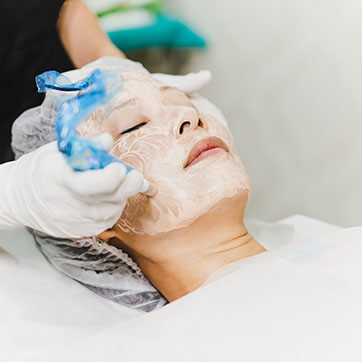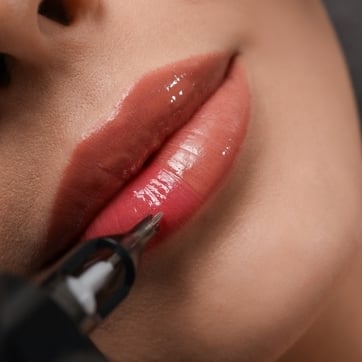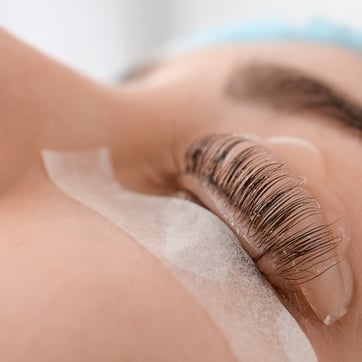
What is Microblading? How Does it Work and What to Expect
Microblading may be an option for persons with thin brows who want what some consider a semi-permanent fill. You should know this new trend, including
At Pretty in the City, Elite Beauty Institute takes excellent satisfaction in the fact that we can provide the most up-to-date and cutting-edge paramedical cosmetology services that the industry has to offer. People who need paramedical procedures may experience a change in their life and an increase in their confidence due to the development of medical tattooing. These operations are intended to hide and disguise, allowing you to recover while feeling attractive and strongly like yourself.
Even if you have a scar or any other imperfection on your skin, it’s possible that you won’t be a candidate for skin repigmentation. If you satisfy the requirements listed below, you should seriously consider applying.
Your fault should be at least nine to twelve months old and have a consistent colour by now. If the tissue is red or pink, it may still be in the healing process. Because working prematurely on scar tissue might potentially cause more harm to the skin, a professional and qualified medical tattooist will avoid doing so.
It is impossible for camouflage tattooing to hide or rectify drastic alterations in the skin’s texture. It’s possible that the technique won’t work if your scar or the surrounding skin region is lumpy or elevated.
Post-inflammatory hyperpigmentation (PIHP), often known as dark margins or borders surrounding a scar, results from the original trauma or surgery that caused the scar. Getting a camouflage tattoo will likely result in a more significant degree of hyperpigmentation and a broader border (note: The risk of this happening is greater with darker skin color.)
You are not a suitable candidate for skin color repigmentation if you have any of the following conditions or symptoms: birthmarks that seem like port wine, spider veins, freckles, age spots, dark circles under the eyes, hyperpigmentation, or vitiligo that is not typical (not in remission). Lasers and chemical peels are two examples of non-micro pigmentation medical therapies that may be used to alleviate these concerns. Please confer with a qualified medical professional to determine the most effective treatment for these illnesses.
It is impossible to restore the appearance of the skin to how it was before it was wounded with camouflage tattooing. A scar or other skin irregularity will not be “erased” by the technique so that it seems to be entirely gone, and the region again appears “beautiful.” It helps to hide the scar and make it less obvious to other people by improving the colour contrast between the spot and the surrounding skin. Therefore, you should set reasonable expectations for yourself.
There is no “perfect” match regarding a scar camouflage tattoo and the surrounding skin tone. This is because blood flow, the temperature of the body, and tanning all contribute to the continuous shifts in the skin’s tone. If the tattoo is exposed to sunlight or a tanning booth, the pigment will not darken; nevertheless, the tattoo may seem lighter as the surrounding skin tans. When the colour of the tattoo is the same as the tanned skin, it has the potential to appear darker after the surrounding skin has faded. Therefore, if you spend time outside, you must adjust your lifestyle or choose to match your tattoo to “winter” or “summer” skin and live with the changes. Alternatively, you can decide to check your tattoo to “winter” or “summer” skin and live with the transitions between the two.
The procedure of camouflage repigmentation is not a “cure” that can be completed in a single sitting. It is done on skin that has been injured or changed and is considered “unhealthy.” It is impossible to anticipate how it will react. A scar or vitiligo patch can have sections that either absorb pigment, reject it, or perhaps both. Immediately after a tattooing session, the region will seem black and red, and it will take many weeks for the color to change to its healed state (or not). This takes time and patience on your part.
Pain levels will range from mild to severe depending on the treatment and the individual’s pain tolerance; however, we will always try to maintain pain levels at a five or below. When asked, most of our customers claim they are at a one to three, and we provide a variety of numbing methods from which you may choose the one that works best for you. These methods include local anesthetics such as Bactine and Anesten and dental freezing for lip tattoos. If you suffer from anxiety, your physician may also advise you to take any prescription medicine they have given you in the hours leading up to your consultation.
In certain circles, “medical tattooing” is used interchangeably with “micro medical pigmentation.” A person with a skin disorder such as vitiligo or post-inflammatory hypopigmentation due to skin damage might benefit from using skin camouflage to enhance the look of their skin. Scar camouflage is a technique that helps diminish the visibility of scars left behind after injuries such as burns, surgeries, or the treatment of congenital conditions like cleft palate. In areas of the eyebrow, mustache, or scalp where hair has been lost due to illness (such as cancer or alopecia), trauma, or natural thinning, hair simulation may help restore the illusion of total hair growth.
This method may also be used to create the appearance of hair stubble. Patients who have had a mastectomy can benefit from reconstructive camouflage because it allows for creating a nipple and areola on their newly reconstructed breasts. Additionally, the results of breast surgeries such as augmentation, reduction, and breast lift can be concealed using reconstructive camouflage.
Our knowledge also extends into the paramedical area of scar revision, scar camouflage hair follicle replication, areola restoration, vitiligo, skin pigmentation problem camouflage, and many other conditions. In every one of our processes, we use the most recent, cutting-edge technology and pigments of the highest quality.
Tattooing the skin with varying shades of flesh-tone pigments is one method that may be used to disguise scars or the skin itself. Its function is to conceal an old wound or a skin region devoid of pigment or colour. Permanent cosmetic tattooing is a subfield of medical and paramedical tattooing that focuses on a specific application of permanent cosmetics. This procedure is also known as corrective pigment camouflage (CPC), skin repigmentation, scar camouflage, scar camouflage tattooing, and skin color tattooing. Another name for this treatment is corrective pigment camouflage (CPC).
The expert who will undertake these operations has to be familiar with the science that goes into pigments and the physiology of human skin and tissue. For these operations, you need expert knowledge, training, abilities, and experience in permanent cosmetics, in addition to an aesthetic sense for determining how different skin tones should be treated.
Contact the trained medical specialists at Elite Beauty Institute now to arrange your first appointment to learn more about Paramedical Tattooing Treatment and establish whether it is correct and check out our Microblading Dubai based Microblading Courses.





Microblading may be an option for persons with thin brows who want what some consider a semi-permanent fill. You should know this new trend, including

The BB Glow therapy is the most recent and rapidly expanding treatment in Europe and Asia. It is now making its way to the United

At Pretty in the City, Elite Beauty Institute takes excellent satisfaction in the fact that we can provide the most up-to-date and cutting-edge paramedical cosmetology

Eyelash lamination is a technique that creates the appearance of fabulously curled eyelashes that point upward, Elite Beauty Institute is the best institute for that.